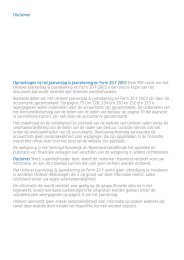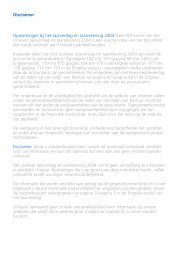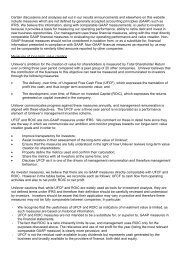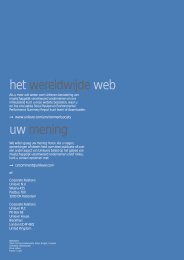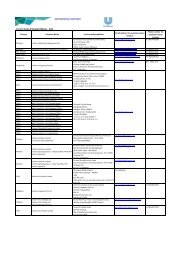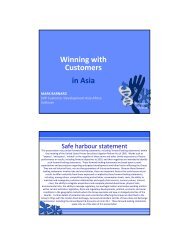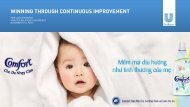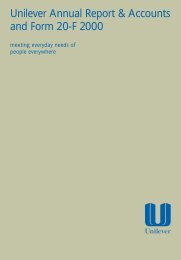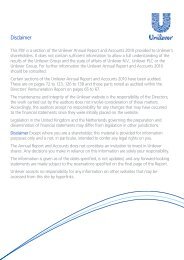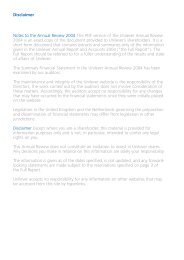Unilever Sustainable Living Plan Progress Report 2011
Unilever Sustainable Living Plan Progress Report 2011
Unilever Sustainable Living Plan Progress Report 2011
Create successful ePaper yourself
Turn your PDF publications into a flip-book with our unique Google optimized e-Paper software.
26 <strong>Unilever</strong> <strong>Sustainable</strong> <strong>Living</strong> <strong>Plan</strong> <strong>Progress</strong> <strong>Report</strong> <strong>2011</strong><br />
5.0<br />
OUR COMMITMENT<br />
oUr aPProach<br />
Packaging is important: it protects our products, allows<br />
us to transport them safely, and ultimately saves far more<br />
energy than it consumes. At the same time it can end<br />
up as waste, particularly in those countries where the<br />
infrastructure for recycling is poor. We share a responsibility<br />
with our consumers to prevent packaging from ending up<br />
either in landfill or blighting the landscape as litter.<br />
Packaging improvements can bring immediate business<br />
benefits. The more we reduce our packaging, the greater<br />
the savings in materials, energy and transport. The<br />
challenge is to continue to use packaging that is<br />
appealing and effective but to reduce significantly its<br />
environmental impacts.<br />
our approach to this is to reduce, reuse and recycle.<br />
We are reducing the weight of our packaging by using<br />
stronger, lighter-weight materials. We are also making our<br />
packaging more recyclable and aim to use more recycled<br />
material ourselves.<br />
But dealing with ‘post-consumer waste’ – packaging and<br />
product thrown away after use by our consumers – presents<br />
a different challenge. The infrastructure for dealing with<br />
waste varies hugely between countries. To meet our targets,<br />
recycling rates in some of our markets must double or<br />
even triple. So we face the challenge of working with local<br />
governments, nGos, retailers and others to help build<br />
effective programmes for recycling post-consumer waste.<br />
Halve the waste associated with the disposal of our products by 2020*<br />
OUR PERFORMANCE<br />
Given the complexity of calculating the impacts of our<br />
product portfolio, we are investing in an automated<br />
process to allow us to measure progress regularly.<br />
An interim sample of 2010 data shows that our waste<br />
footprint has remained broadly unchanged.<br />
OUR FOOTPRINT<br />
Source for Footprint and pie charts: <strong>Unilever</strong> 2008 baseline study across 14 countries.<br />
Total in tonnes.<br />
WHAT MATTERS MOST<br />
Reducing the weight of packaging and<br />
increasing recycling.<br />
59% 14% 27% [x%]<br />
+ + –<br />
Primary packaging Transport packaging Product leftovers<br />
l 0 AcHIEVED l 7 on-PLAn l 1 oFF-PLAn l 0 MISSED<br />
National index of materials<br />
recycled and recovered /<br />
estimates<br />
* Throughout this document our environmental targets are expressed against a baseline<br />
of 2008 and on a ‘per consumer use’ basis. This means a single use, portion or serving<br />
of a product (see page 41). We set our baseline by calculating the waste from over 1,600<br />
representative products. We did this at an absolute level as well as on a per consumer<br />
use basis in 14 countries. The calculation covers 70% of our volumes.



